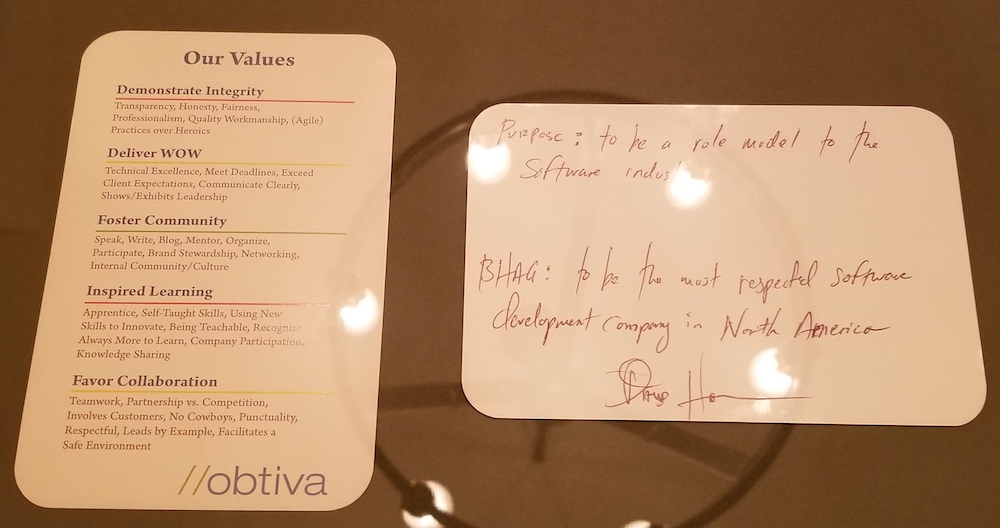Friends know that I endlessly talk about team values. They’ve made a huge difference in my career - I still have a framed copy of Obtiva’s values next to my desk (complete with our Big Hairy Audacious Goal courtesy of Dave Hoover).

Many organizations capture their values in fancy signage and slide decks. Typically they become something of a joke, a bar bet to see if anyone can name more than 1 or 2. How do you make these values stick in a way that helps new hires understand what it means to be successful in your team though?
Your onboarding process is the ideal way to start that journey.
I love this description of Toyota’s onboarding from Kim Scott’s Radical Candor:
Wanting to combat Japanese cultural taboos against criticizing management, Toyota’s leaders painted a big red square on the assembly line floor. New employees had to stand in it at the end of their first week, and were not allowed to leave until they had criticized at least three things on the line.
Toyota combines two powerful learning techniques to make sure employees learn this critical value:
You can imagine an alternate universe where new Toyota hires sit through a presentation with a slick graphic encouraging them to “question everything.” I’m guessing these employees don’t need such a presentation though - they’ve already lived it.
Another example from a totally different company: one of Reverb’s biggest competitive advantages is a culture that expects everyone to care about the product deeply. To that end, they developed what they called “The Contest” - all new hires are given a budget and told to buy and resell as much inventory on the site as they possibly can. By the end of your five weeks in The Contest, you understand the product’s strengths and weaknesses firsthand. They even hand out bonuses to people who make suggestions on how to improve the product from the contest.
In both cases, employers have identified what they value most in their employees and have incorporated those values into an engaging, hands-on onboarding processes. New employees have no choice but to learn and demonstrate the company’s core values.
If your team isn’t finding a way to turn your values into action through your new hires, you’re missing a huge and early opportunity to convert good hires into good hires for your company.
I’ve been reading THINKING FAST AND SLOW by Daniel Kahneman. There is a real risk this blog temporarily becomes flooded by small bits from this fascinating work.
Let’s say you only have 5 minutes with one of your teammates to answer the question “How satisfied is this person with their job?” What do you ask and what do you look for?
Many new managers define 1:1 meetings as something like “a regular opportunity for a manager and their direct report to check in.” That’s a fine starting point but it misses out on a significant learning opportunity for leaders of all skill levels: the peer one-on-one.